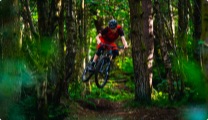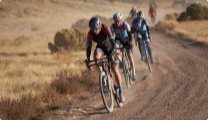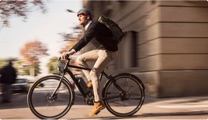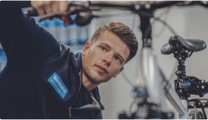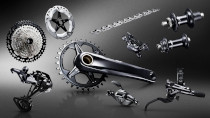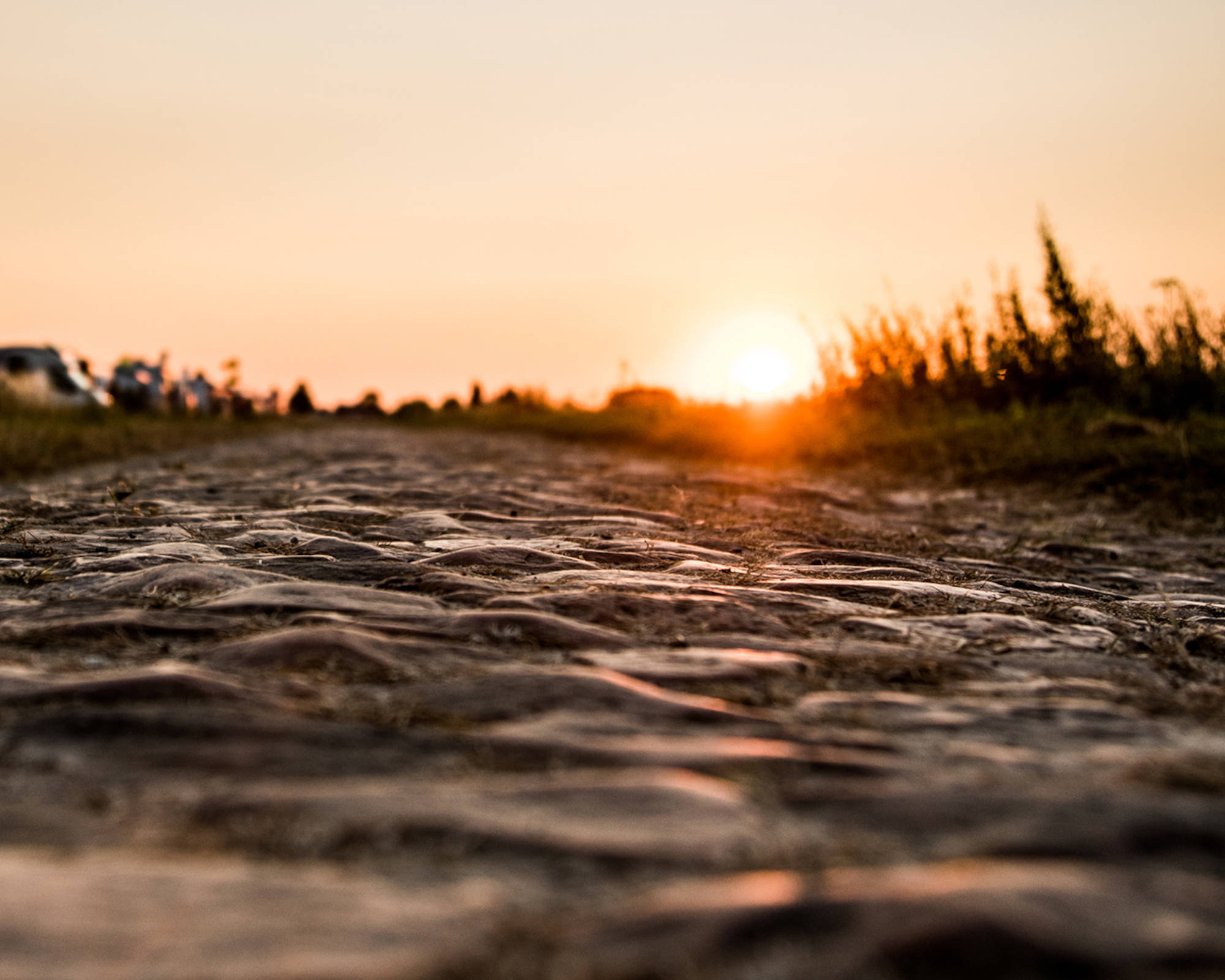The Tour de France is the ultimate proving ground for road bikes. This year’s race is 3,414 kilometres long. The riders will plunge down 100-plus-km/hr descents, sprint through fading gaps in the peloton, and brake at the last possible moment over and over to make up a few spots before wet corners. They will attack the smouldering pitches of the Alps and the Pyrenees. Their equipment has to work flawlessly. Their bikes and components need to be light, responsive, and dependable, and packed with the latest technology to gain every conceivable advantage. We visited the peloton’s pre-race paddock to see what the teams competing in this year’s Tour de France are riding.
Alpecin-Fenix: Canyon Aeroad CFR
Mathieu van der Poel and his Alpecin-Fenix teammates brought Canyon’s Aeroad CFR to the Tour de France. When they are sprinting into the wind with the finish line fast approaching, riding at the front of the peloton, or spending long days in breakaways, they will appreciate its aerodynamic design, which reduces drag to an absolute minimum. In the mountains, they will gain an advantage from its astonishingly light weight. It’s a bike that is made to go fast, especially uphill. That is true of Alpecin-Fenix’s Dura-Ace wheels as well. Nothing was holding Van der Poel back when he launched his attack on the Mûr-de-Bretagne and raced into the yellow jersey. Tim Merlier hardly felt the wind when he won the next day’s sprint. For shifting, Alepecin-Fenix opts for the precision of Shimano’s Di2, which is the best in the business.
Team Jumbo-Visma: Cervelo R5
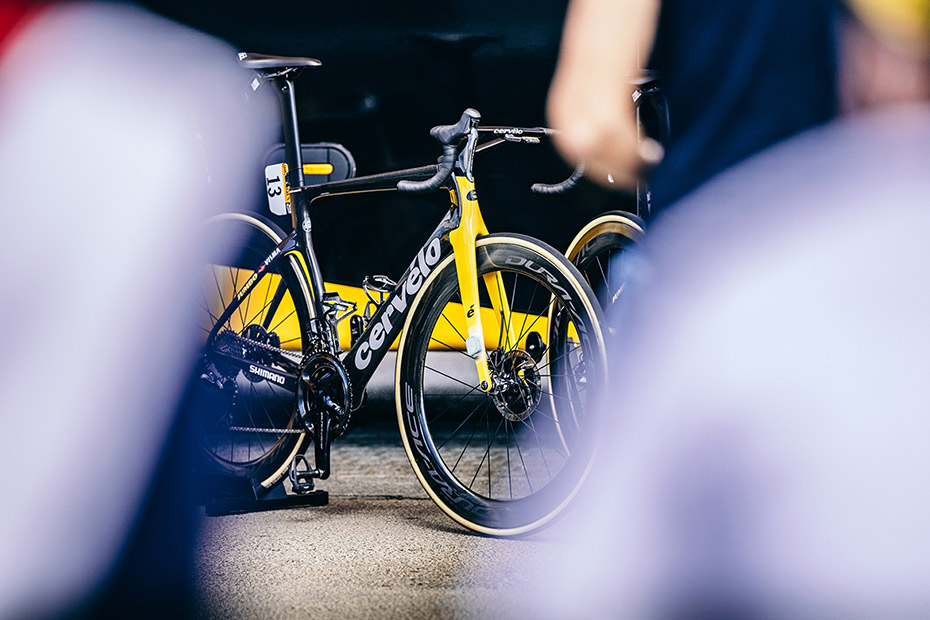
Team Jumbo-Visma came to the Tour de France to win the maillot jaune. A couple of crashes set them back in the first week, though Jonas Vingegaard is still in with a shot at the podium. He and his teammates already have one consolation prize at the Tour though: a new Cervelo. They are riding an updated R5, which looks even cleaner and features completely internal routing for their Di2 cables. Belgian champion Wout van Aert will be able to ride the same bike in the classics too, as it offers plenty of clearance for wider tyres, which provide better cushioning and grip. That is one great advantage of disc brakes. Their calipers don’t limit the width of the tyres or wheels that you can use. Team Jumbo-Visma’s Dura Ace C-40 and Dura-Ace C-60 carbon wheels feature 28mm rims, which offer greater comfort, aerodynamics, and stability in the wind than narrower rims could provide.
Deceuninck - Quick Step: Specialized S-Works Tarmac SL7
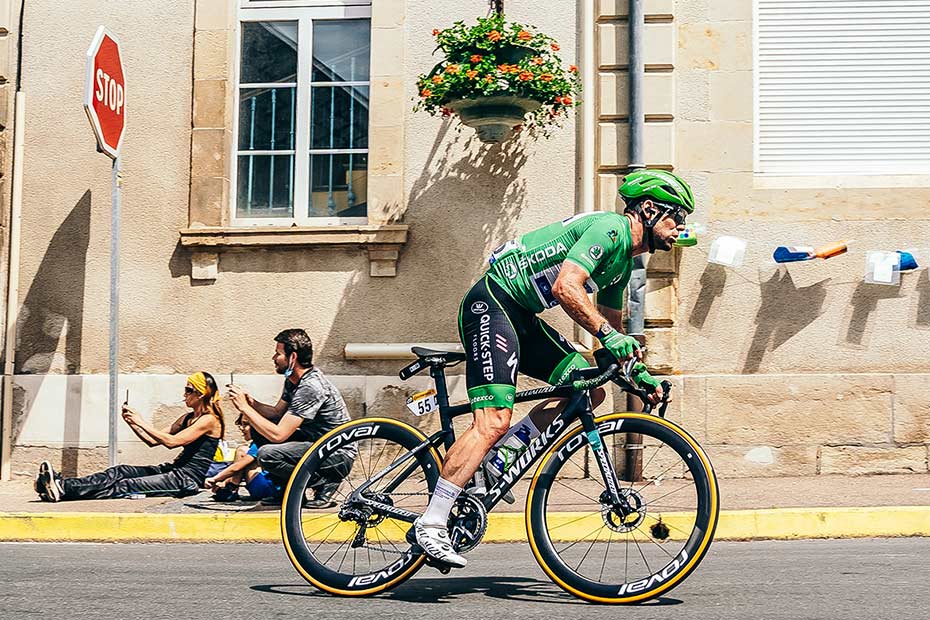
Julian Alaphilippe, Mark Cavendish and their Deceuninck - Quick Step teammates are racing on Specialized’s S-Works Tarmac SL7 at this year’s Tour de France. The SL7 frame weighs just 800 grams, without any sacrifice to aerodynamics, stiffness, or ride quality. Deceuninck - Quick Step’s mechanics have brought that no-compromise approach to their choice of components too. The team is racing on Dura-Ace Di2. That means that Mark Cavendish can have a second set of shift buttons mounted on his bars, so he can easily throw his chain onto the 11 when he is sprinting in the drops. When Julian Alaphilippe is launching one of his blistering attacks, he will be able to shift under torque. One interesting note: Deceuninck - Quick Step has done away with their tubulars and is racing on clincher tyres at this year’s Tour de France. Has it helped? Their victories will tell.
Team BikeExchange: Bianchi Oltre XR4 + Specialissima CV
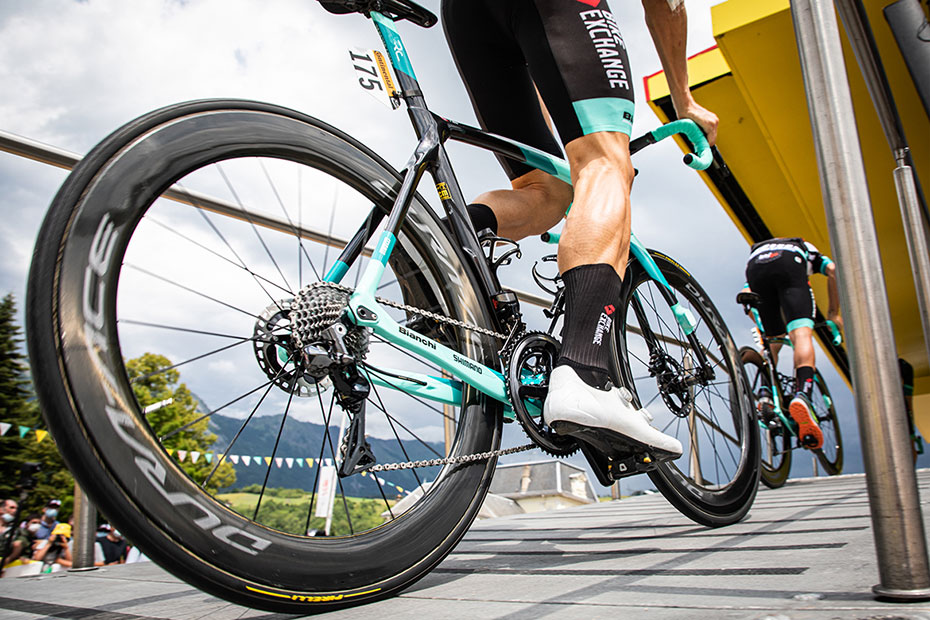
Team BikeExchange is an Aussie outfit, but they are riding Italian bikes this year. Michael Matthews, Simon Yates and their teammates will be going for stage wins on Bianchi’s Specialissima CV and Oltre XR4. The Italian manufacturer has a long history at the Tour de France. Champions such as Fausto Coppi and Marco Pantani have won the maillot jaune while riding Bianchi’s celeste frames. Team BikeExchange’s machines are painted the same famous colour—of course—and are fitted with Shimano Dura-Ace Di2 and Dura-Ace wheels. Great champions from the past would have adored lightweight carbon rims and the precision of electronic shifting. For cycling technology, this is a golden age.
BORA - hansgrohe: Specialized S-Works Tarmac SL7
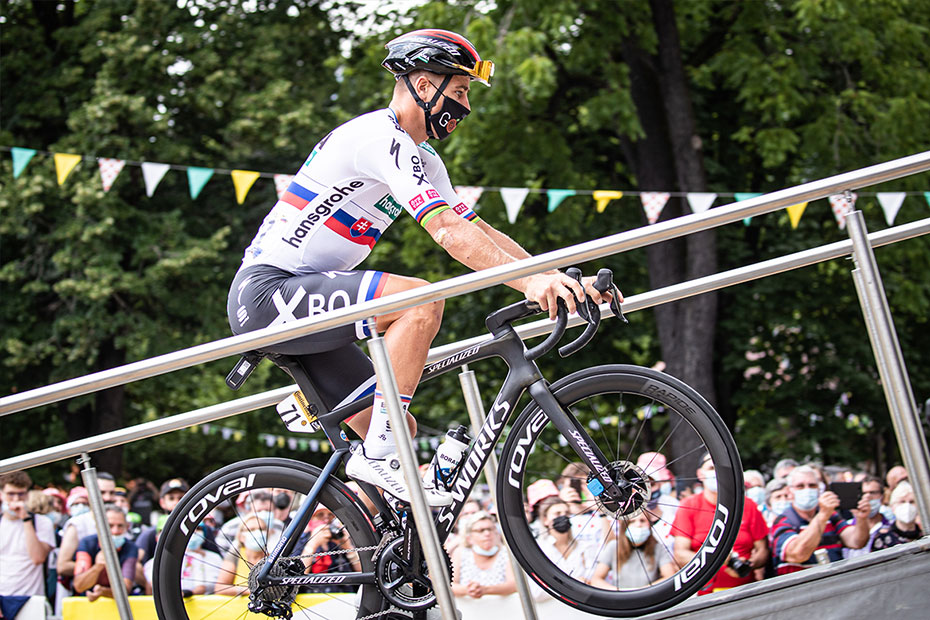
Peter Sagan is going for his eighth green jersey at this year’s Tour de France. He will be riding Specialized’s feathery S-Works Tarmac SL7, a frame that sacrifices nothing in terms of aerodynamics. Even in the full throes of a sprint, he will be able to drop his chain down the cogs of his cassette without a moment’s hesitation or loss of power, thanks to Shimano’s nearly frictionless Di2 drivetrain, which offers unmatched shifting precision. On mountain descents, Sagan and his teammates will make full use their Dura-Ace disc brakes’ exceptional power. They will race into corners with absolute confidence, thanks to the advanced design of their lightweight Dura-Ace rotors, which dissipate heat exceptionally well and work just as well in the rain.
Team DSM: Scott Foil RC + Addict RC
Team DSM sparkled at last year’s Tour de France. Day in and day out, they went on the attack and came home with three brilliant stage wins. This year, they are back for more—with bikes to match. Their Scott Addict RCs and Foil RCs are painted dark blue with glittering turquoise-green flecks. The Addict RC is made for the mountains and hilly stages, where Søren Kragh Andersen, Tiesj Benoot, and Nils Eekhoff hope to light up the race. The Foil RC is Scott’s aero frame. Dutchman Cees Bol will try to get a first Tour de France stage win on his. For wheels, Team DSM has Shimano’s full Dura-Ace range at their disposal. In the mountains, they will opt for the lightweight responsiveness of their C40s. For sprint stages, Team DSM’s mechanics will mount C60 wheels, which are even stiffer and more aerodynamic. Team DSM is racing with Shimano Dura-Ace Di2, which provides unparalleled electronic shifting and precise braking performance.
INEOS Grenadiers: Pinarello Dogma F14
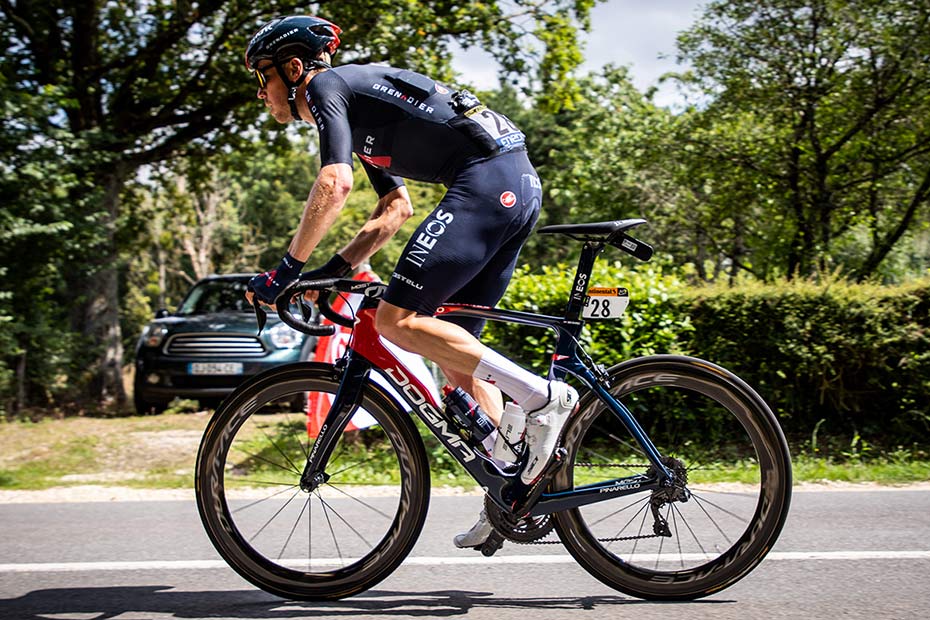
Ineos Grenadiers have a new bike for this year’s Tour de France. Their Pinarello Dogma F14 is significantly lighter than their previous Dogma and features a stiffer bottom bracket. The new Dogma F14 retains the distinctive curves and asymmetric frame design that has been ridden to so many Tour de France victories. Richard Carapaz still hopes he will be the next member of the Grenadiers to swoop into the maillot jaune on his. If he does, it could be the last time a rider wins the Tour de France with rim brakes. The Ineos Grenadiers continue to opt for the slight weight savings of a rim set up over the better stopping power and modulation that discs offer. The Dogma F14 can now be built to the UCI weight limit with discs however.
Groupama - FDJ: Lapierre Aircode SL + Xelius SL Disc
Groupama - FDJ is France’s top team at the Tour this year, and they are racing on French bikes. David Gaudu and his teammates will go for stage wins on Lapierre machines equipped with Shimano Dura-Ace Di2. Groupama - FDJ has used Lapierre bikes since 2002. On flat days, they will opt for the Aircode SL with Dura Ace C-60 wheels for maximum speed. Shimano’s C-60s have undergone countless hours of testing in the wind tunnel. Gaudu will ride the lighter Xelius SL disc when the race heads to the mountains, and his mechanics will mount his lower profile and lighter C-40 wheels. When the Tour de France goes uphill, every gram counts.
Arkéa Samsic: Canyon Aeroad CFR
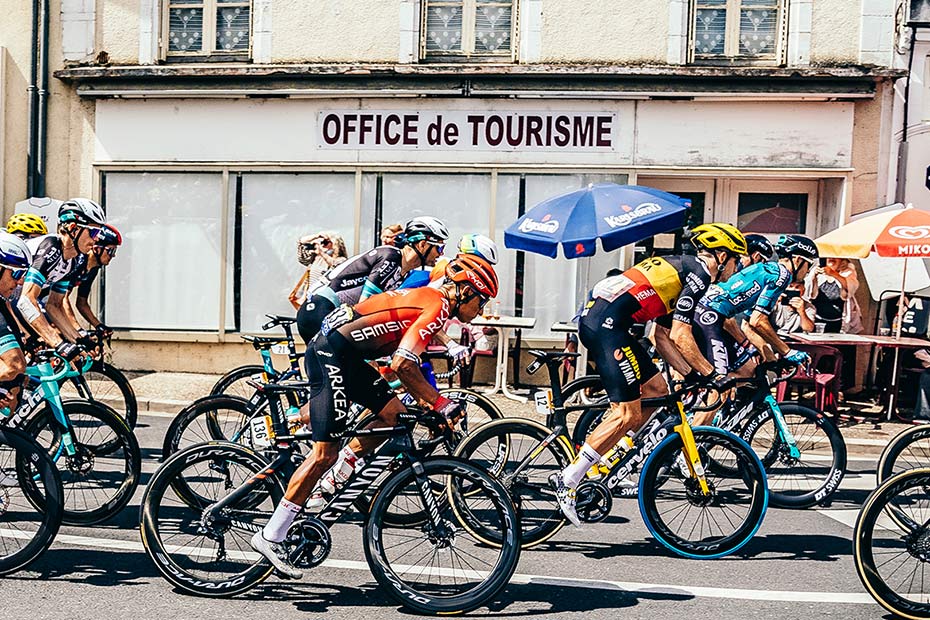
It might be surprising that Nairo Quintana is racing on an aero bike at this year’s Tour de France. The diminutive Colombian is going for the polka-dot jersey in the climber’s competition. Canyon’s Aeroad CFR frame only weighs 915 grams however. With Dura-Ace Di2 components and Dura-Ace wheels, his bike is hardly heavier than the UCI’s weight limit. The entire Dura-Ace system has been engineered for lightweight performance. Dura-Ace cassettes, for instance, are manufactured from titanium and provide fast, accurate, and smooth shifting over a wide range of sprockets. For the biggest days of climbing, Quintana will be able to mount an 11-30T that will allow him to pedal efficiently on the steepest of pitches.
